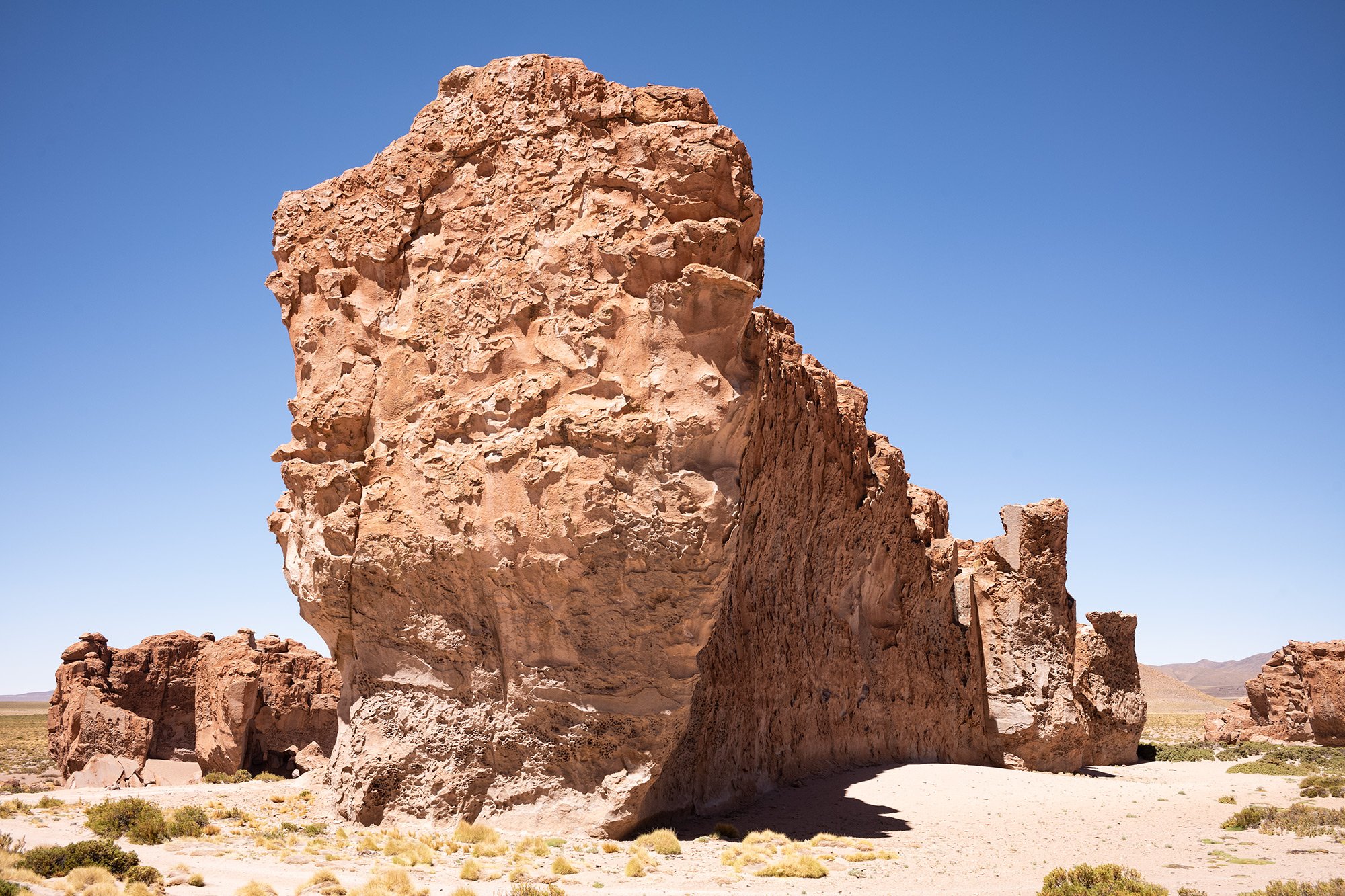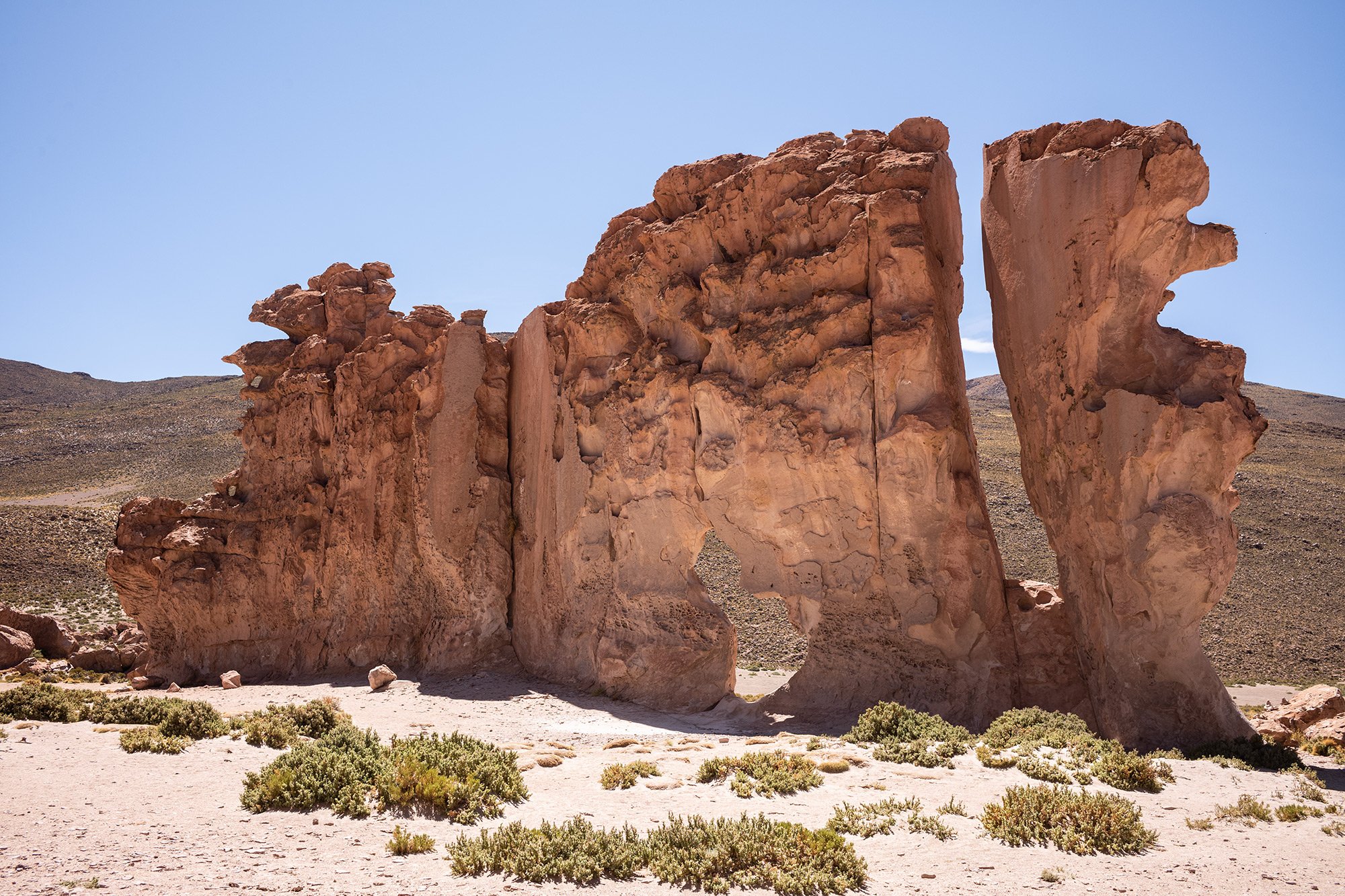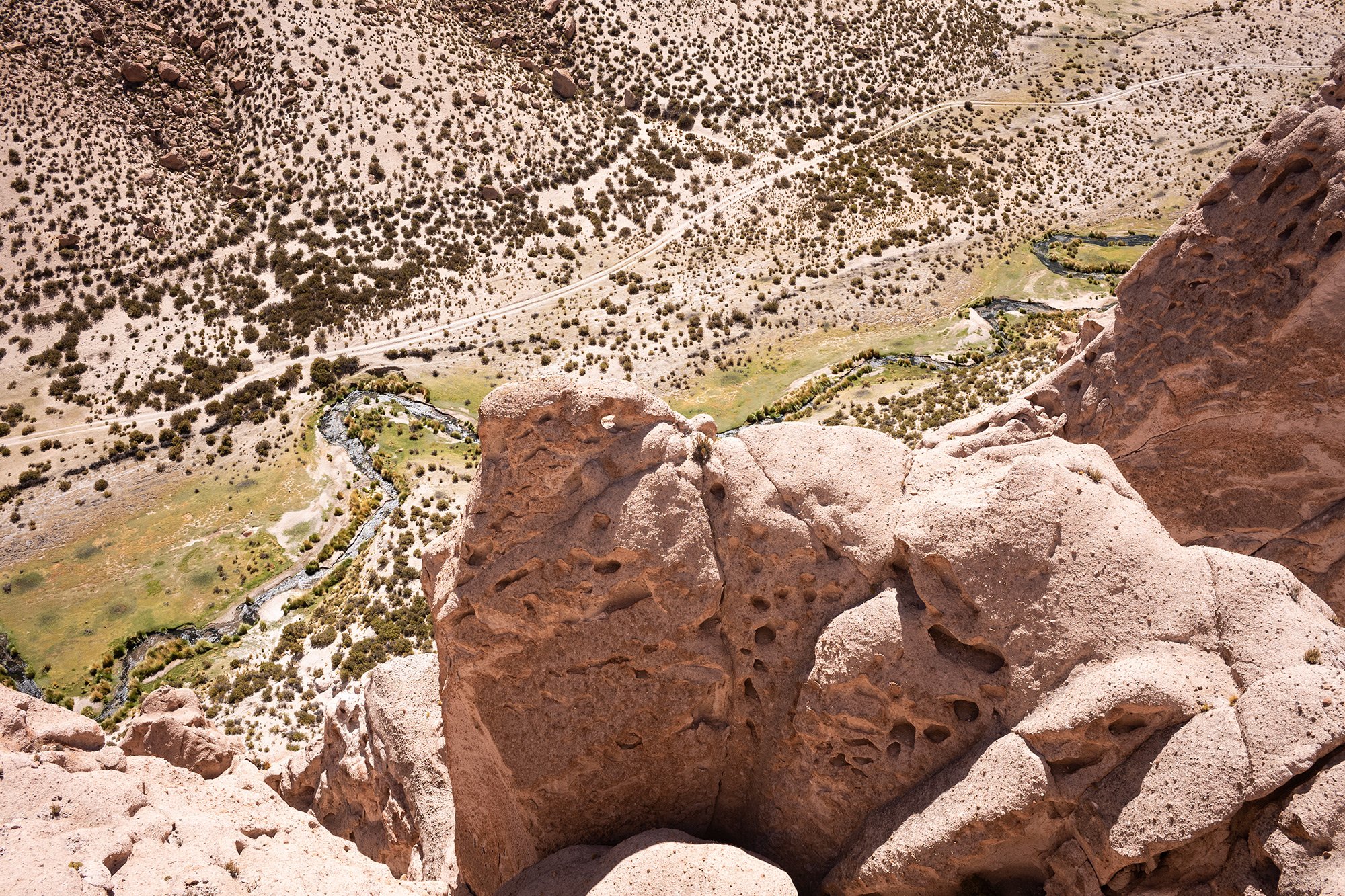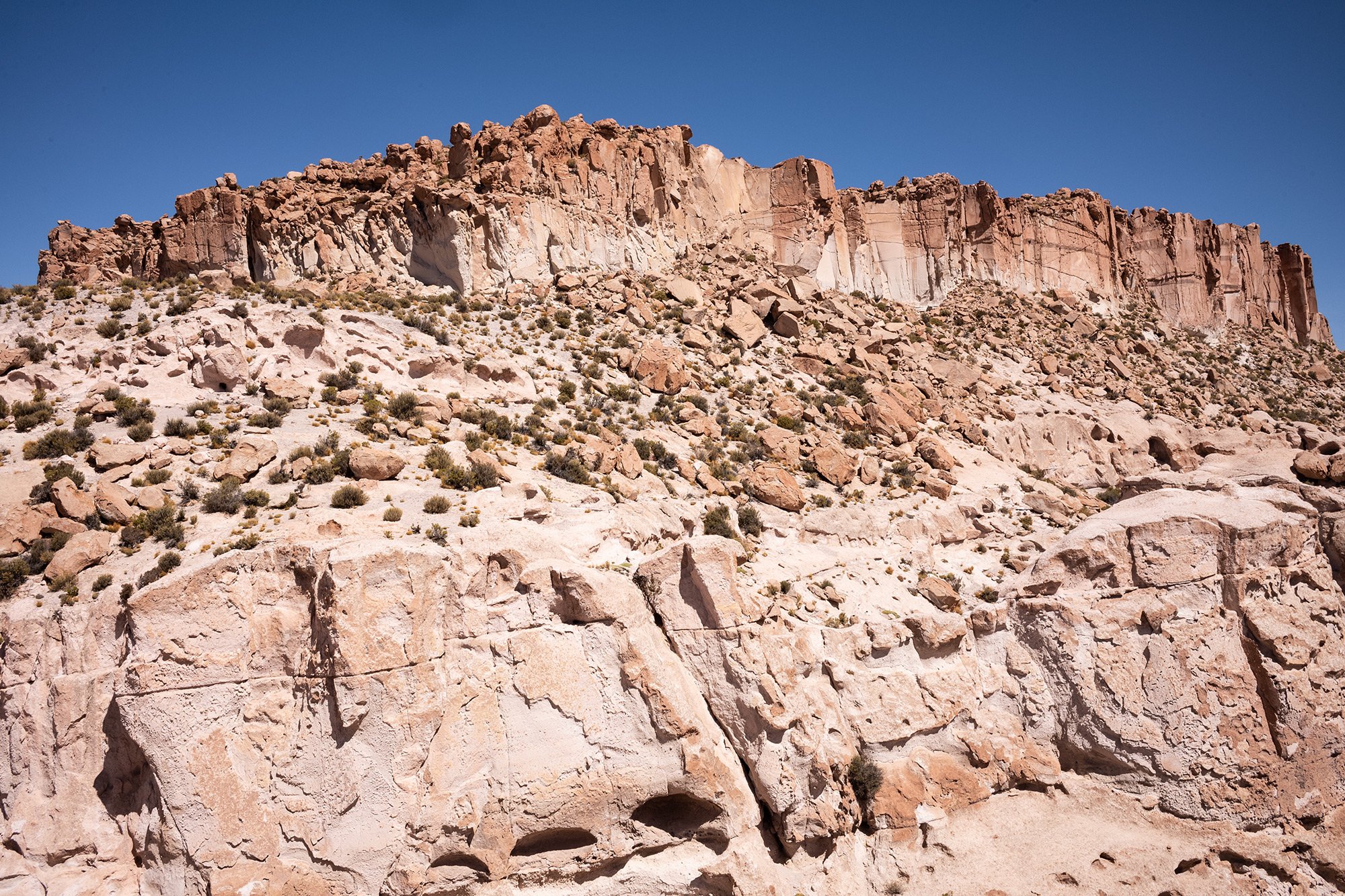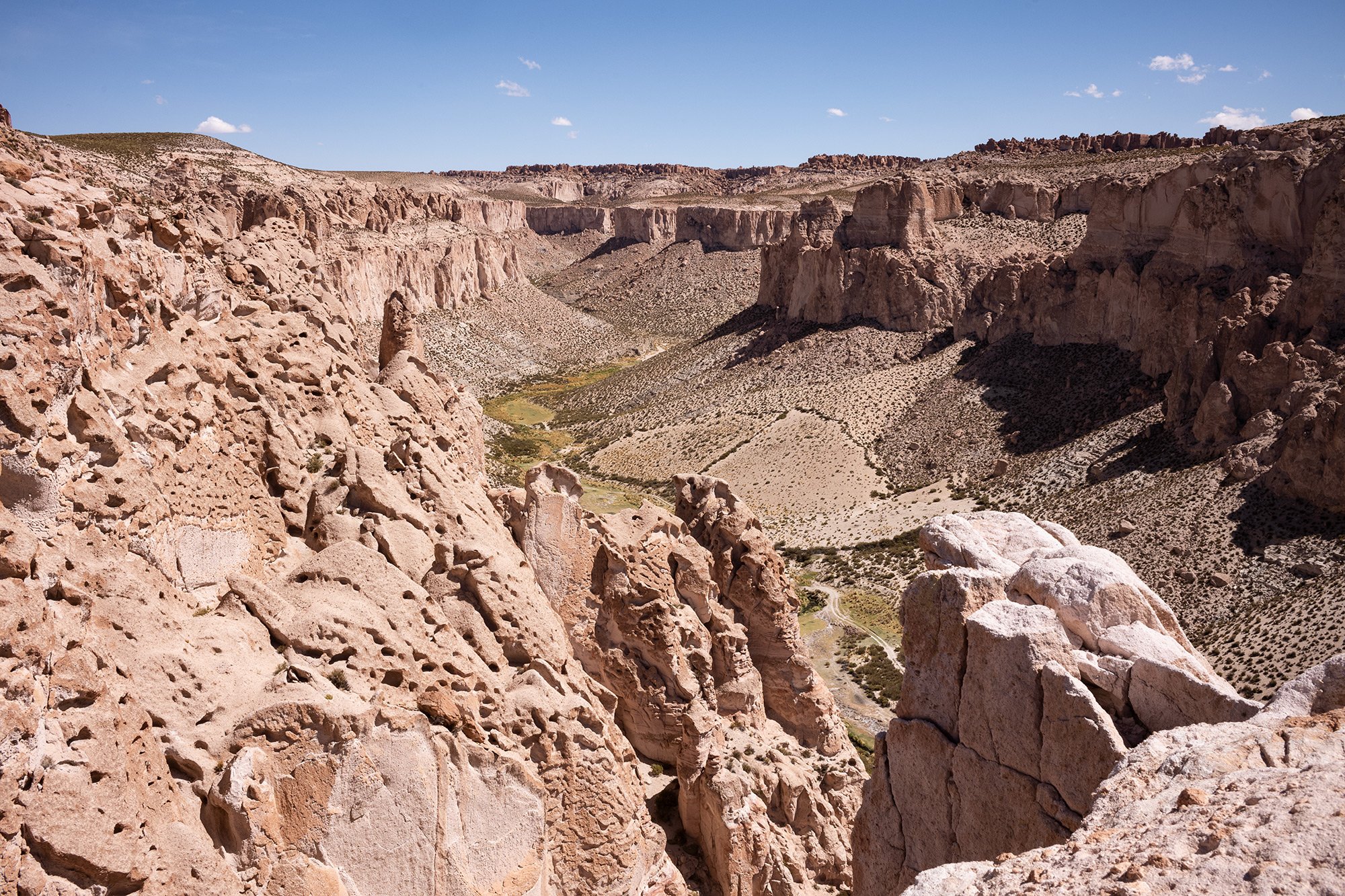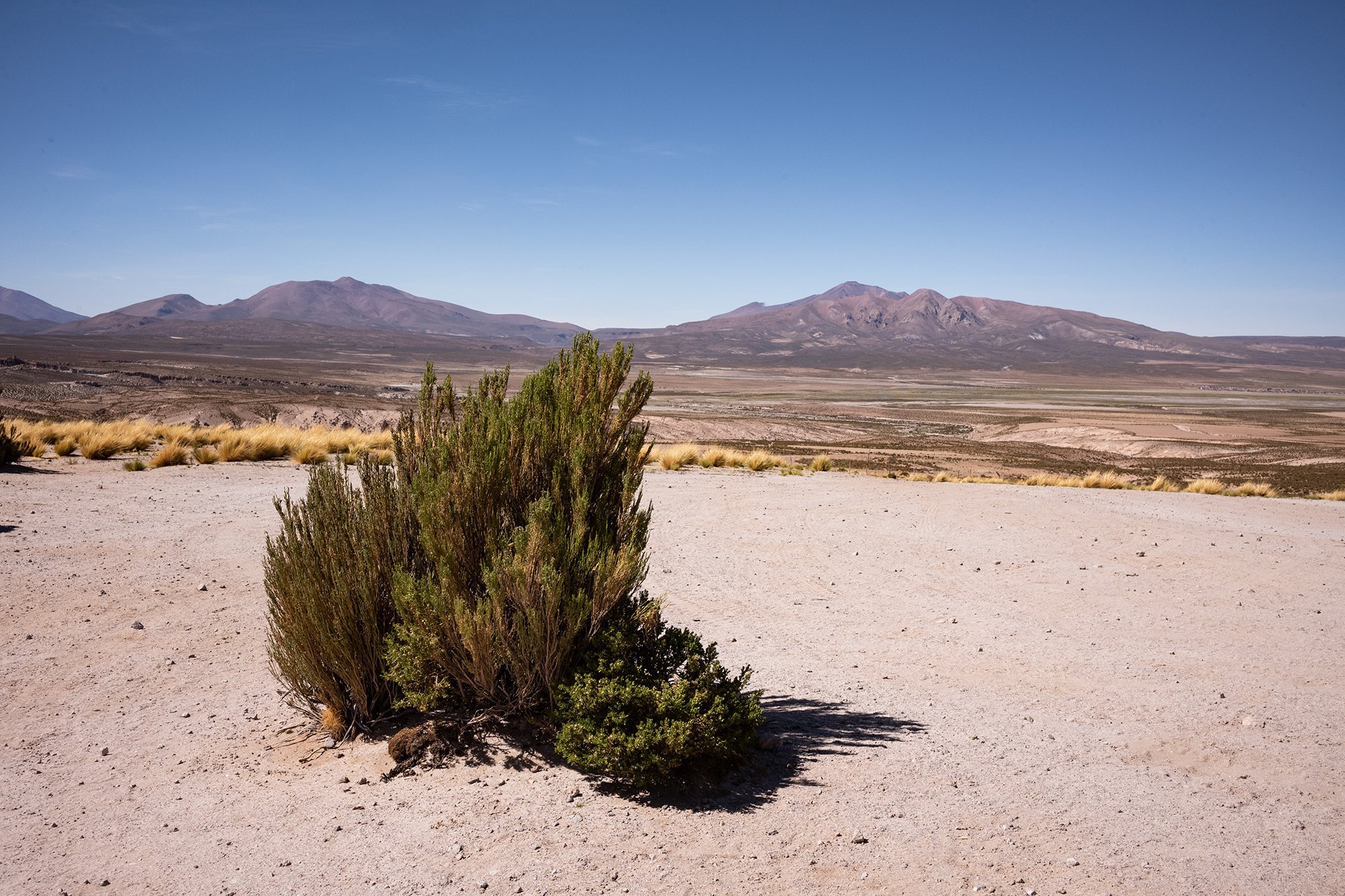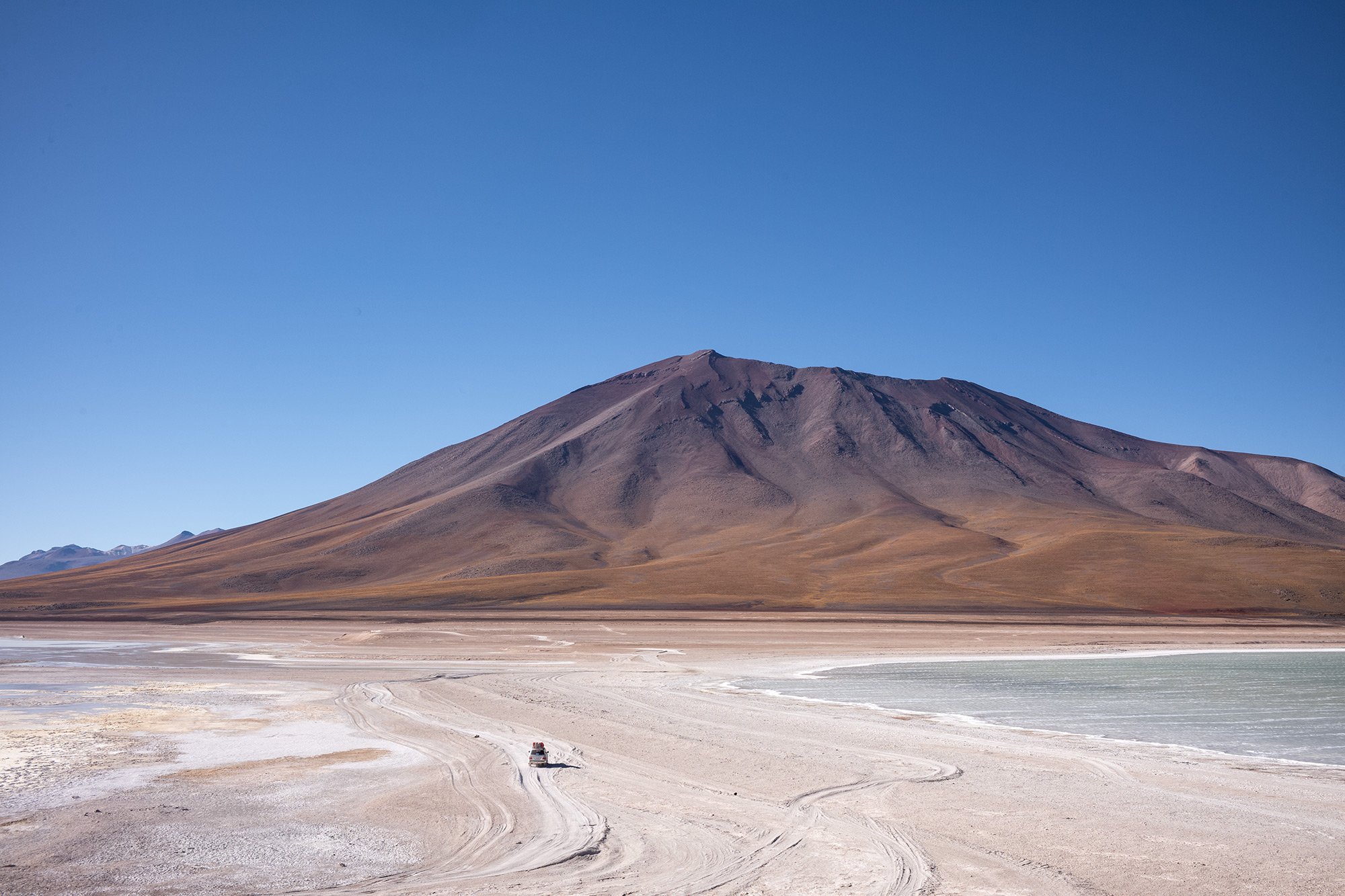
Bolivia:
Chapter three
The desert and back to Uyuni.
In the morning I saw people taking oxygen, lying on the lobby couches as guides prepared their Pathfinders for another day in the desert.
Ronald said that they were seeing more tourists with altitude sickness as of late. Usually they would have come from Peru and acclimatized in Cusco, but the recent political issues have forced tour companies to reroute or cancel trips altogether. Those that are rebooked find them at altitudes higher than they would have encountered in Peru, without as much time for their bodies to adapt. It sounds like guides all travel with oxygen just in case.
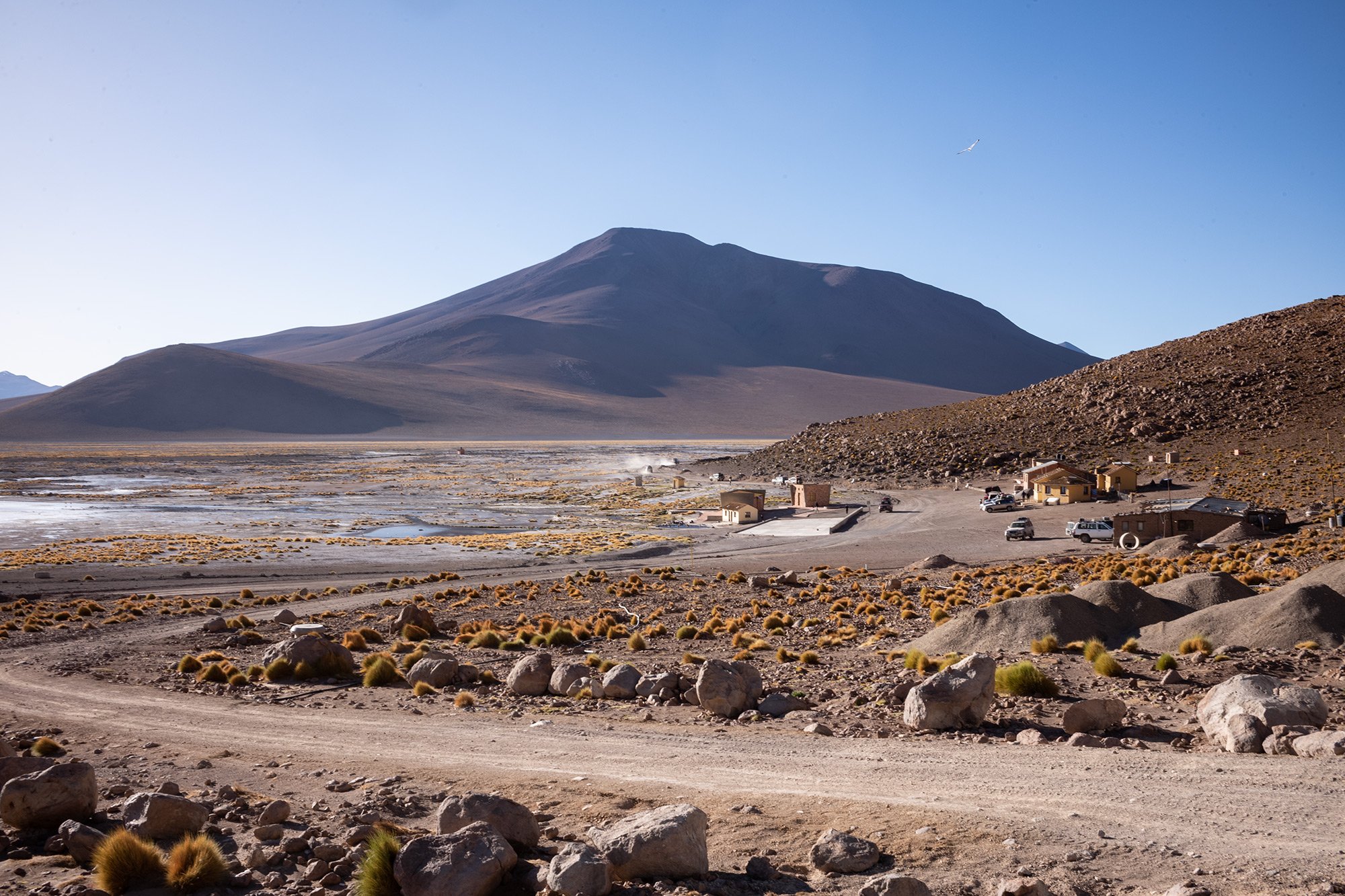
The day broke beautifully over our small settlement. The landscape glowed in the morning light and streamed into the dining area where we took breakfast.
After packing the car, our first stop was the Dalí desert, so named because it is said to resemble the landscapes of his paintings. We made a quick stop to admire the views before moving on. The bulk of the day would be spent driving through the desert to various lagoons and viewpoints. It was to be a lot of time in the car.
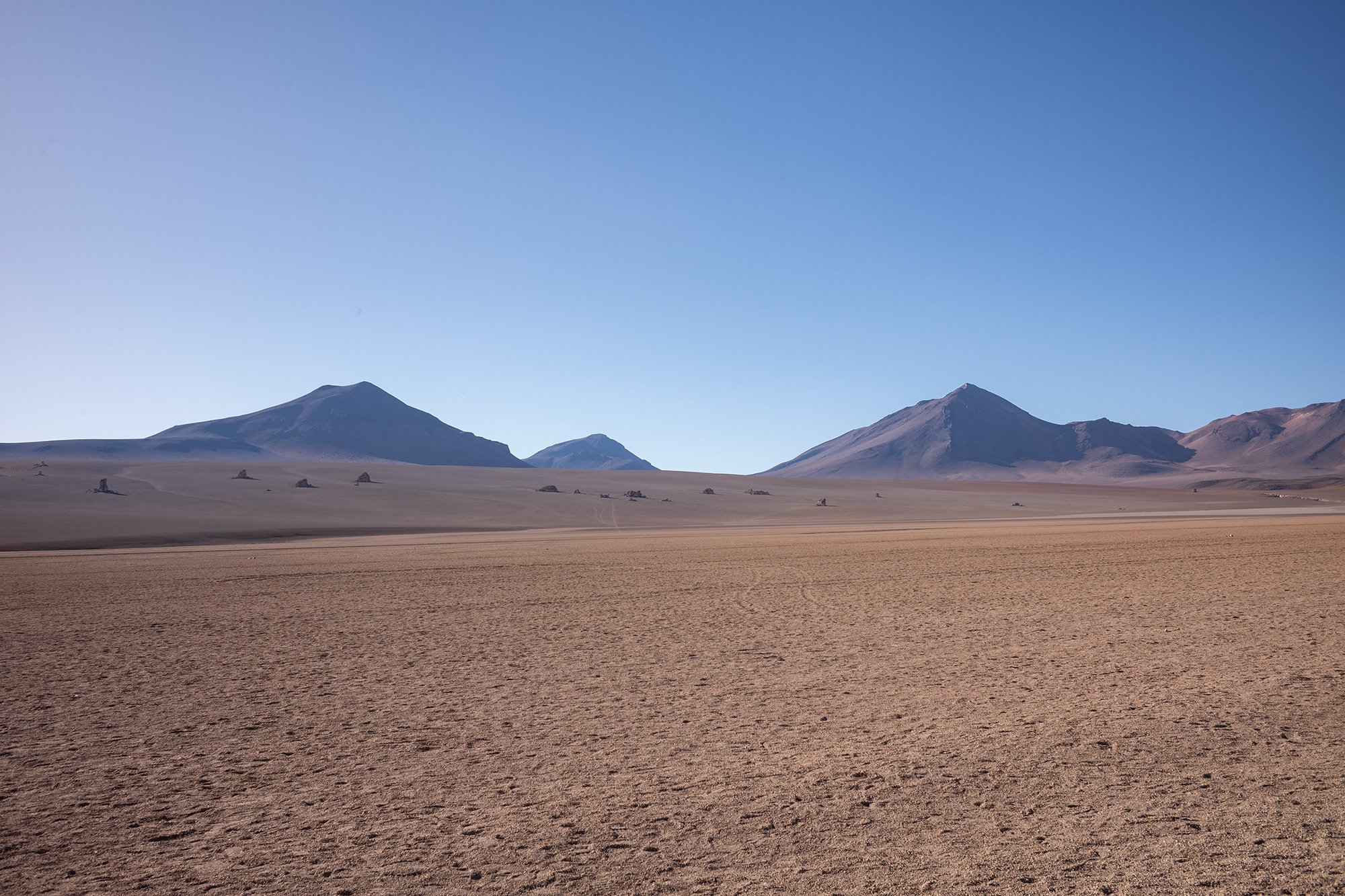

The morning was windy and Ronald said that was a good sign. You needed the wind to stir up the sediment and release the organisms that turned the lagoons their various colors. The red lagoon from the day before and the green lagoon we were headed towards.
I asked if there were any female drivers or guides. He said there were no drivers but there were 10-15 female guides. They go on private one day tours of the salt flats with a dedicated driver. He had told me the day before that because these were one day trips they didn’t need to bring gas canisters. With the extra room they packed tables, chairs, and umbrellas, and tourists would have lunch outside on the flats.
At the green lagoon we paused for pictures. He told us there’d be no flamingoes here due to the arsenic in the water. It was poisonous. Surprisingly there were three close to the shore. He said they must be resting.
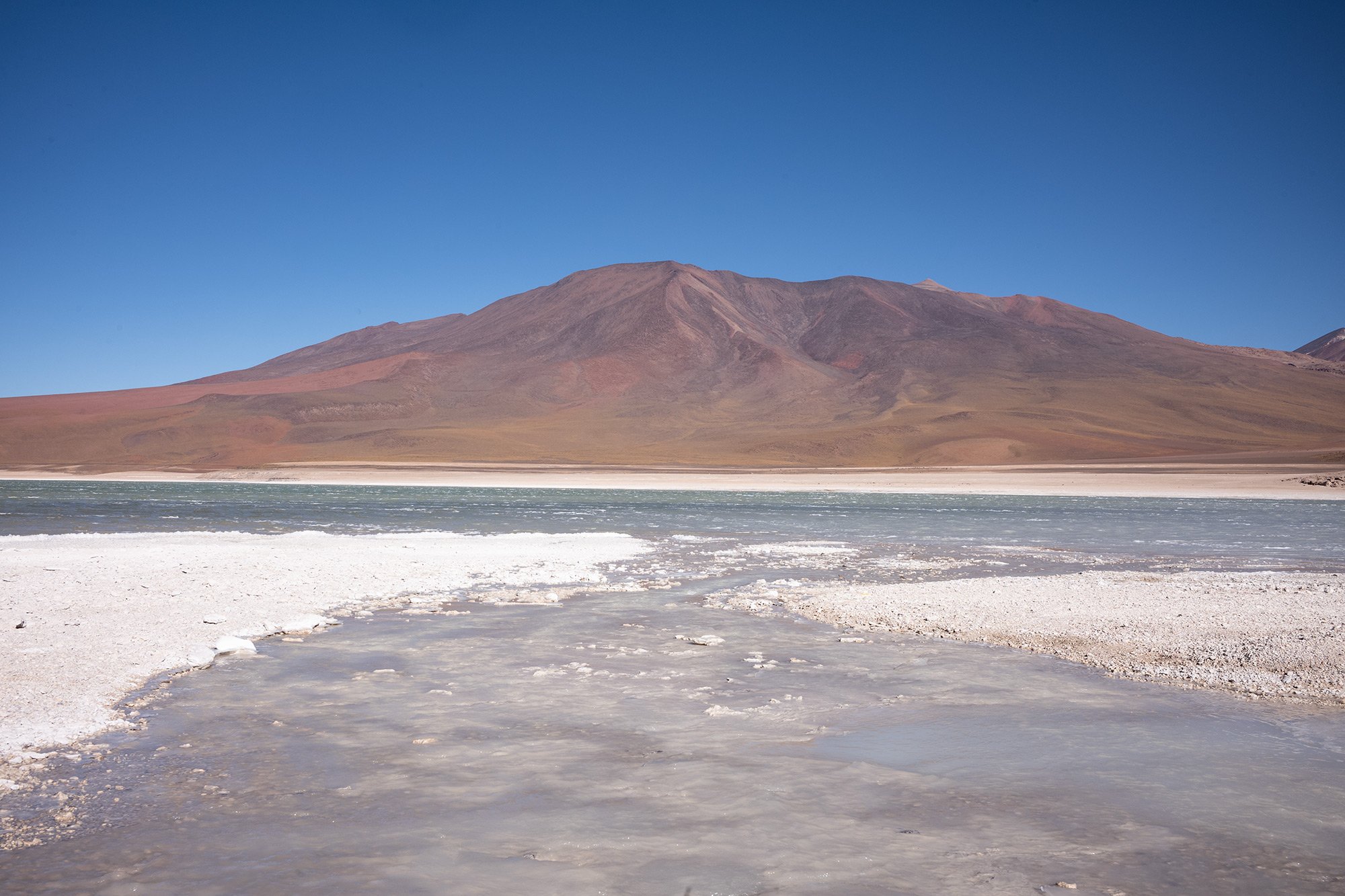
We drove down from the lookout and crossed a small stream that connected the green lagoon to the white lagoon beside it. Ronald told us that the white lagoon fed the green one via this stream and that the white could support life. He pointed to the seagull nests that dotted the lagoon. They built up their nests from the mud and clay from the bed of the lagoon, which wasn’t more than a few tens of centimeters deep. He told us flamingoes did the same to keep their brood safe from predators.
A military outpost stood watch over the lagoon and we were stopped and checked upon passing. We were close to the Chilean border and headed in that direction.



We continued to the border, passing another checkpoint before making our way there. We were dropping off the Brazilians and picking up a passenger to take back to Uyuni. A number of Pathfinders and Sprinter vans were parked in a makeshift lot by the immigration office. A long line of people stood outside the single shed where visas were processed, where one desk processed both those coming and going. It was going to be a wait.
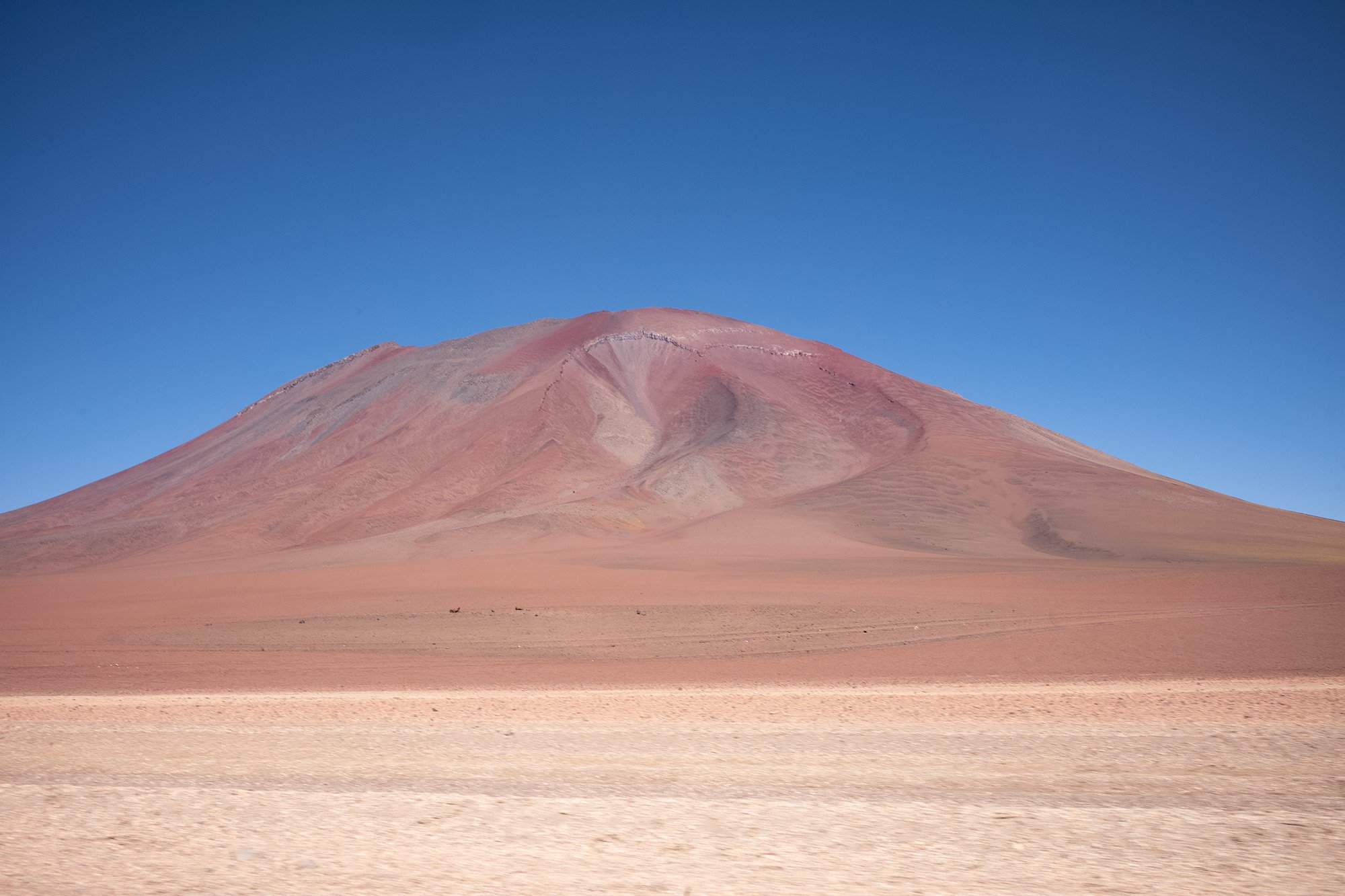


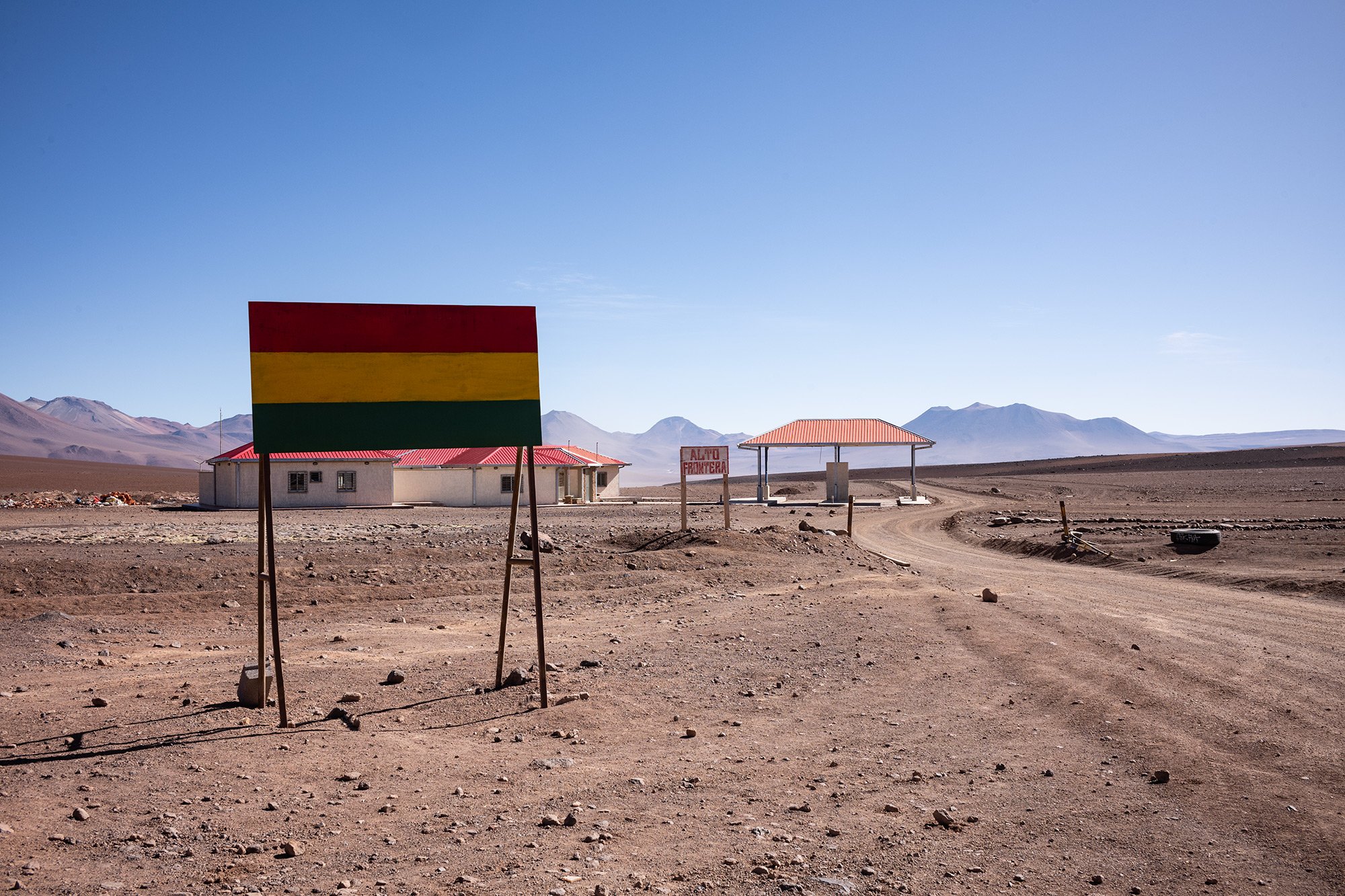
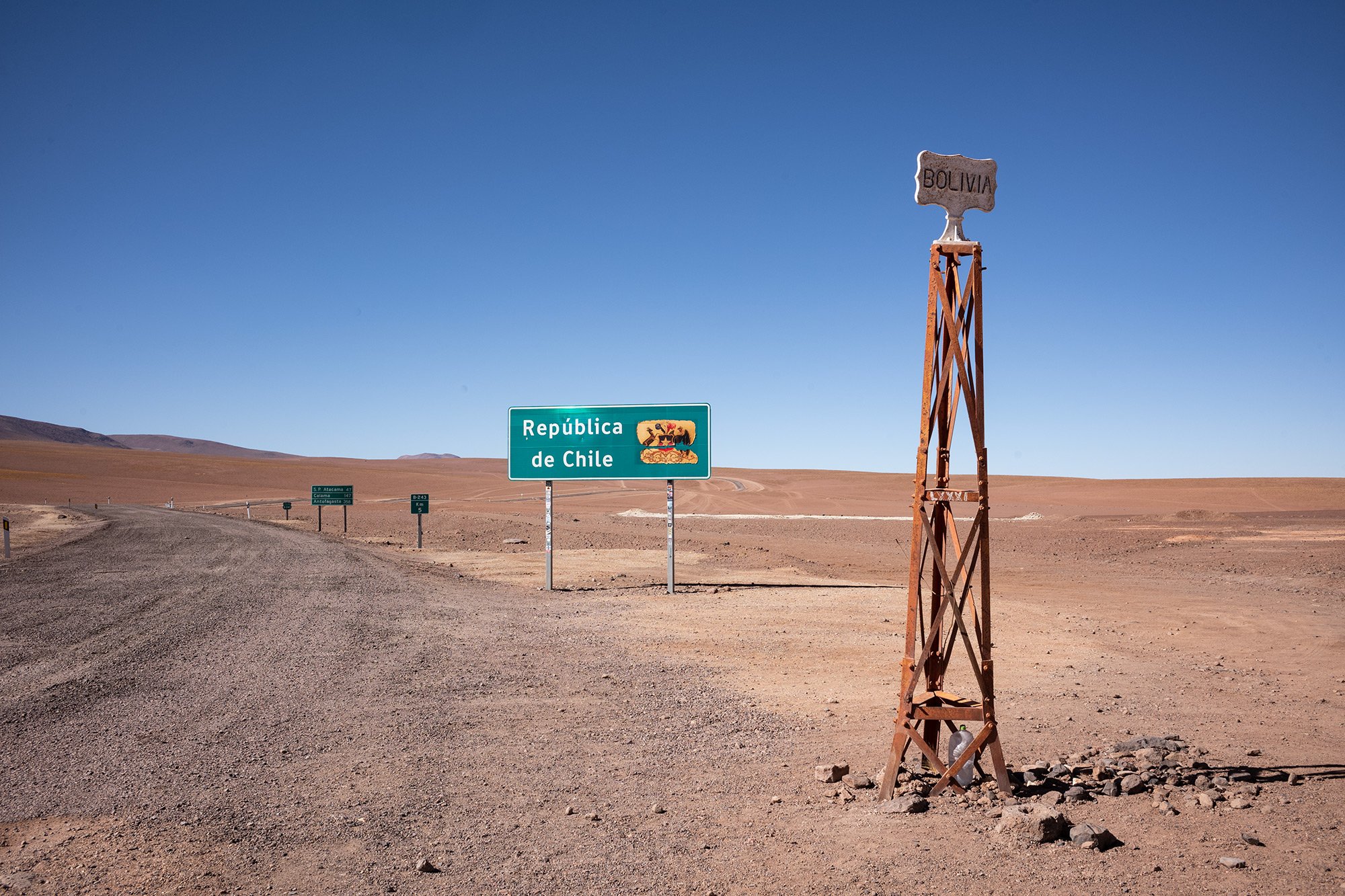
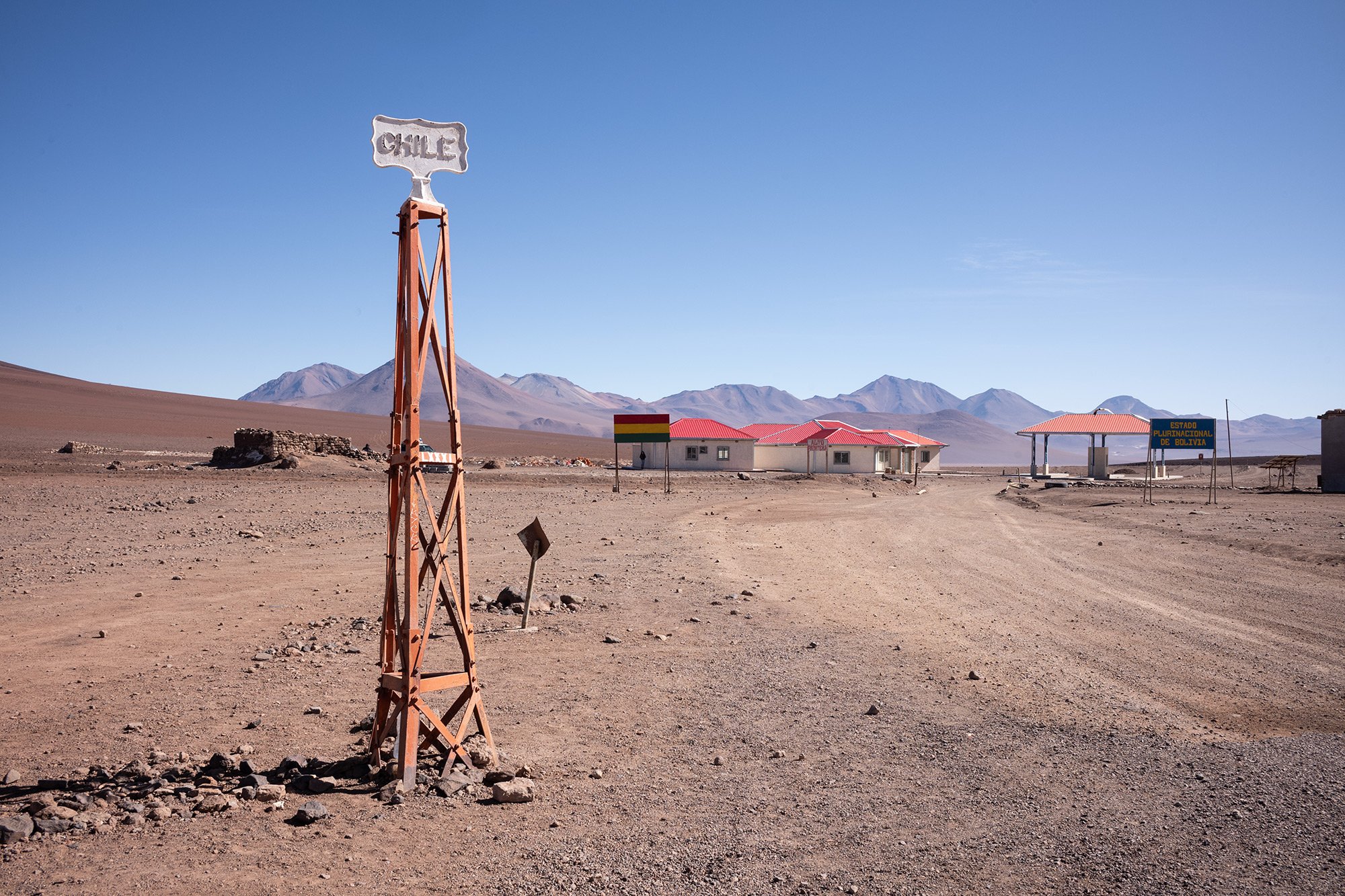
A newer building had been built with what looked to be more modern processes, but I forgot to ask Ronald as to the state of the new building and why things remained as they were.
I walked around the area, illegally crossing and recrossing the border as we waited. It would be a few weeks yet before i made my way properly into Chile.
The bus to Chile was also delayed and so we waited for all parts of the process to be completed. Ronald learned that there were satellite issues and that Chilean immigration was delayed. The delay was exacerbated by the fact that this was during the Chilean holidays and a large number of Chileans were headed to Bolivia on their break.
When the Brazilians finally emerged from immigration Leo told us that it was a child ultimately who stamped his passport.
We exchanged contact info and hugs and then the Brazilians were off to continue their backpacking trip through Chile. We were to bring a Dutch person back with us to Uyuni and we waited while she completed her documentation. Ronald took things into his own hands and managed to help her skip the line. She felt bad about it; the man she cut in front of had been waiting for 40 min, but Ronald was interested in getting us back on the road. We had been at the border for over an hour.

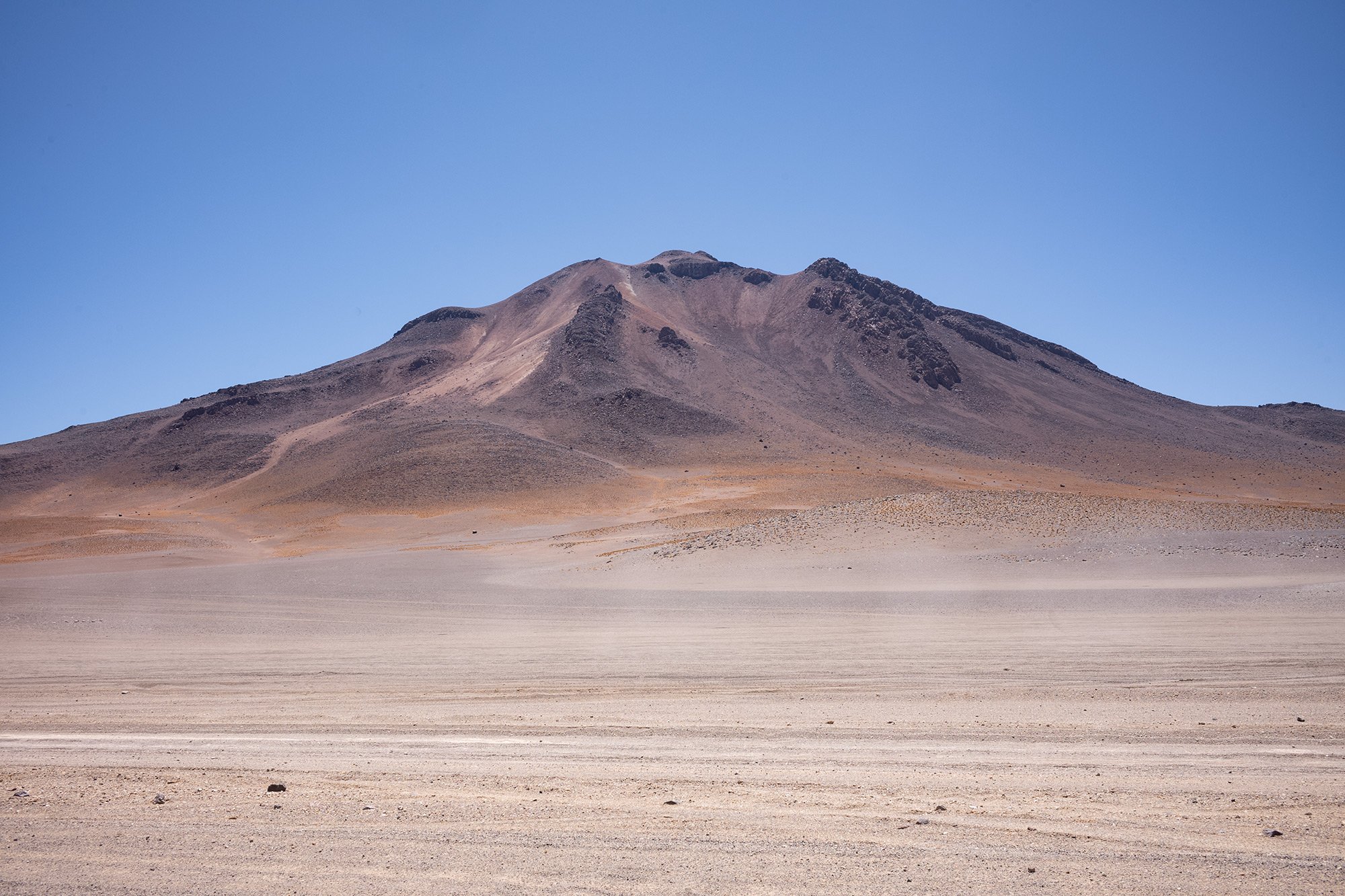
We continued driving through the desert until we came across a small town where we stopped for lunch. Ronald parked the car in a courtyard and a woman served us a simple but tasty meal. We had the opportunity to stretch our legs and I went for a short walk through town.
A little girl adopted Carla. Ronald asked if she wanted to bring her back with her. She was tempted; the girl was loathe to let us leave. Finally Ronald herded us all back in the Pathfinder and we had to say our goodbyes. The girl waved to us as we backed out of the courtyard and onto the street.
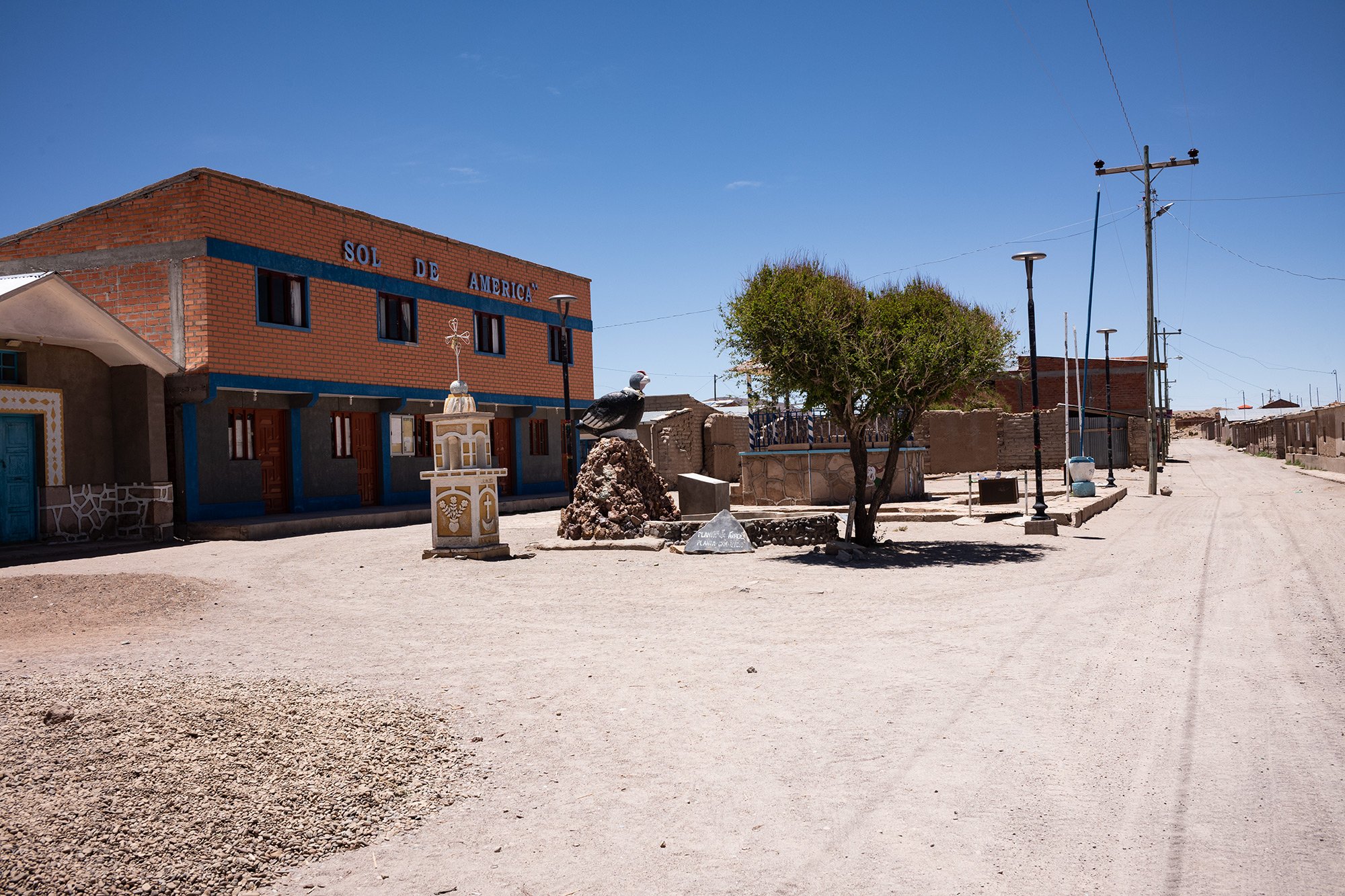

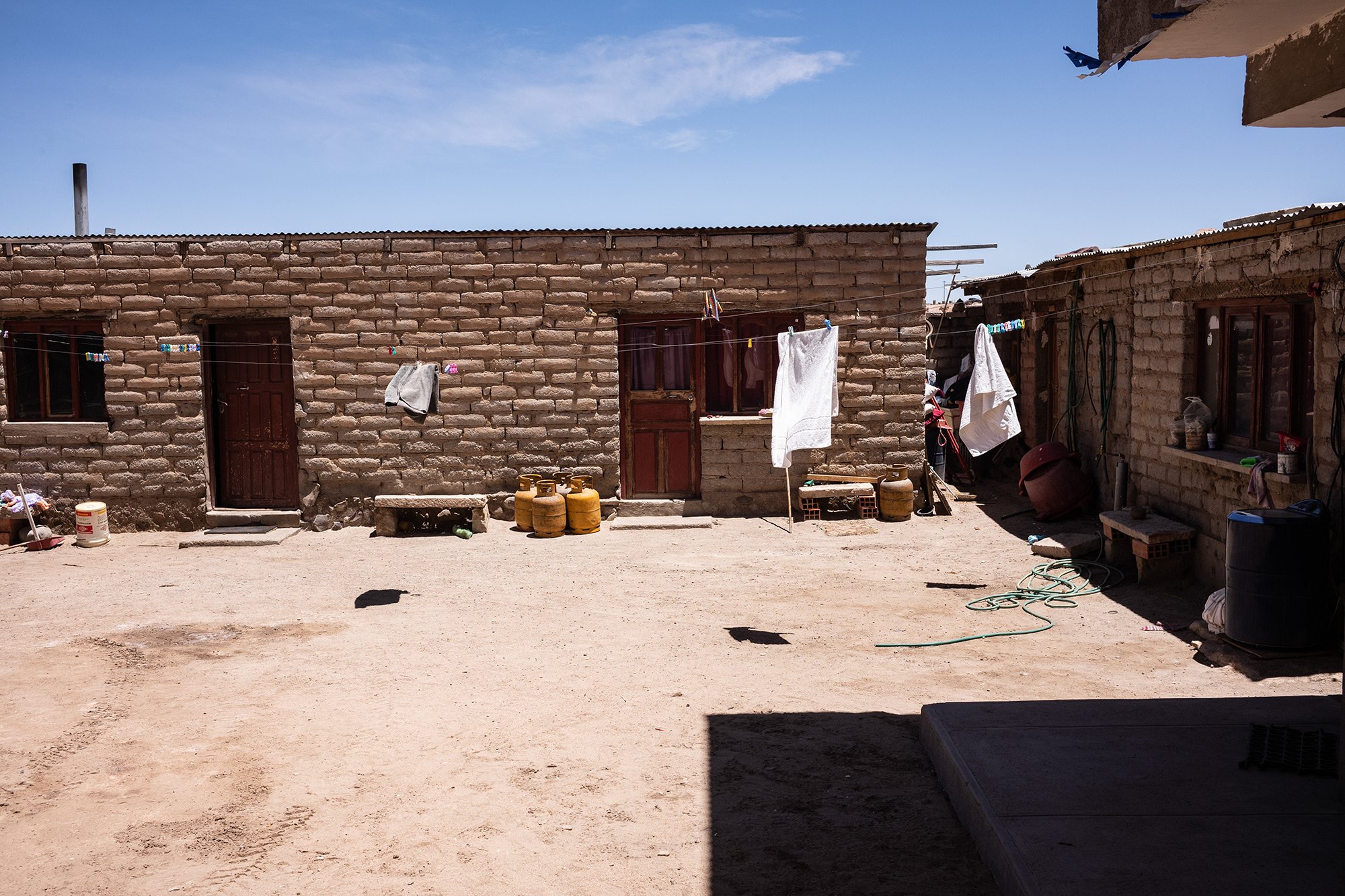
On our final stretch back to Uyuni we made two stops. One in the Valle de Rocas, where we spent some time scrambling around the rock formations, and one at the Canon de la Anaconda, where we walked a path onto a precipice for its views up the canyon and down to the snaking river that gave the canyon its name.
All too soon we were back in Uyuni. Ronald left me at my hotel and bid me well. The first thing I did was to take a long, hot shower to wash the dust of the road from my body. If the hotel had offered one, I would have scheduled a massage. The past three days had been beautiful, but I was looking forward to decompressing after so many days in the back of a Pathfinder. And I was looking forward to the delicious dinner promised to me. I was not disappointed. 🇧🇴
